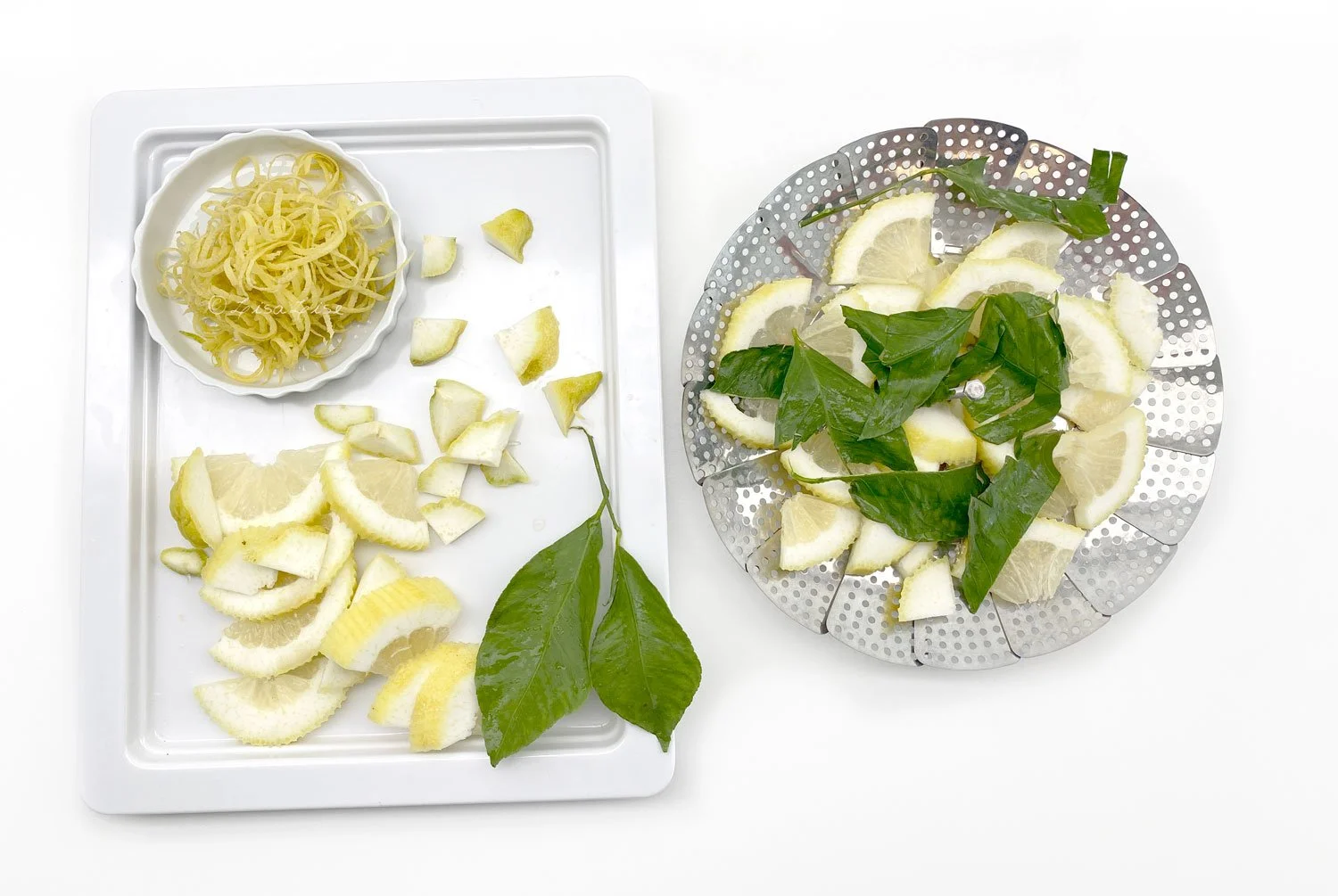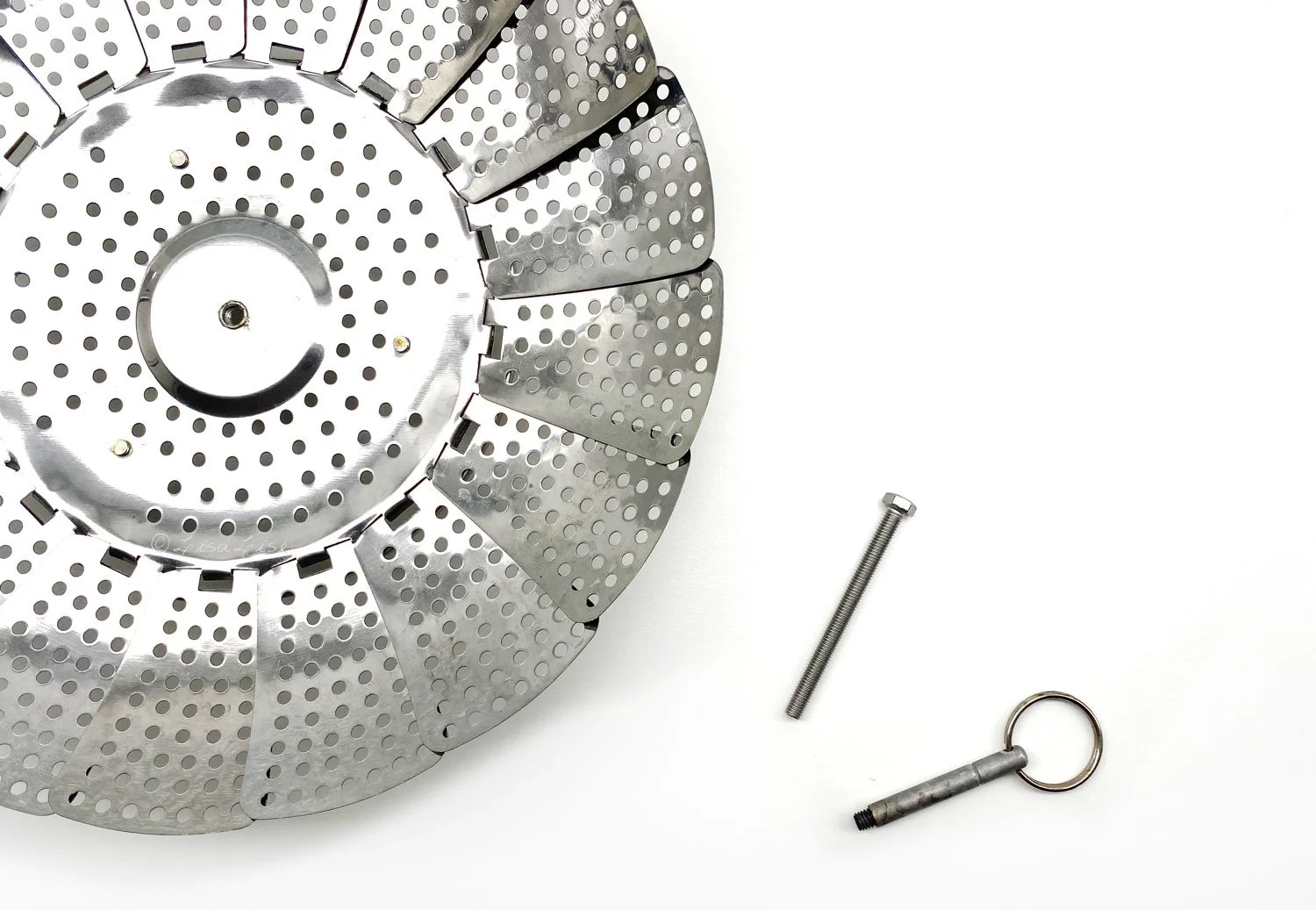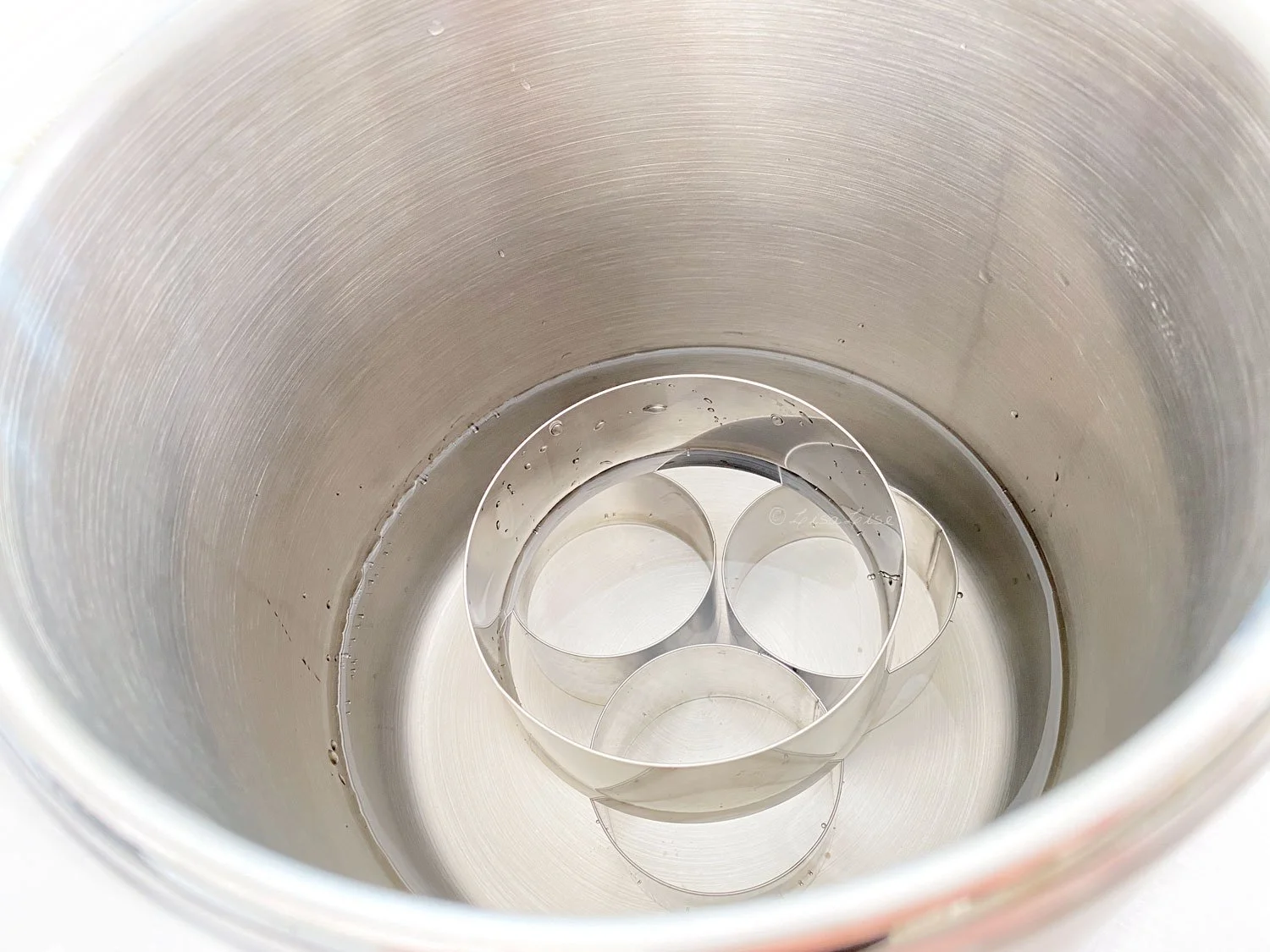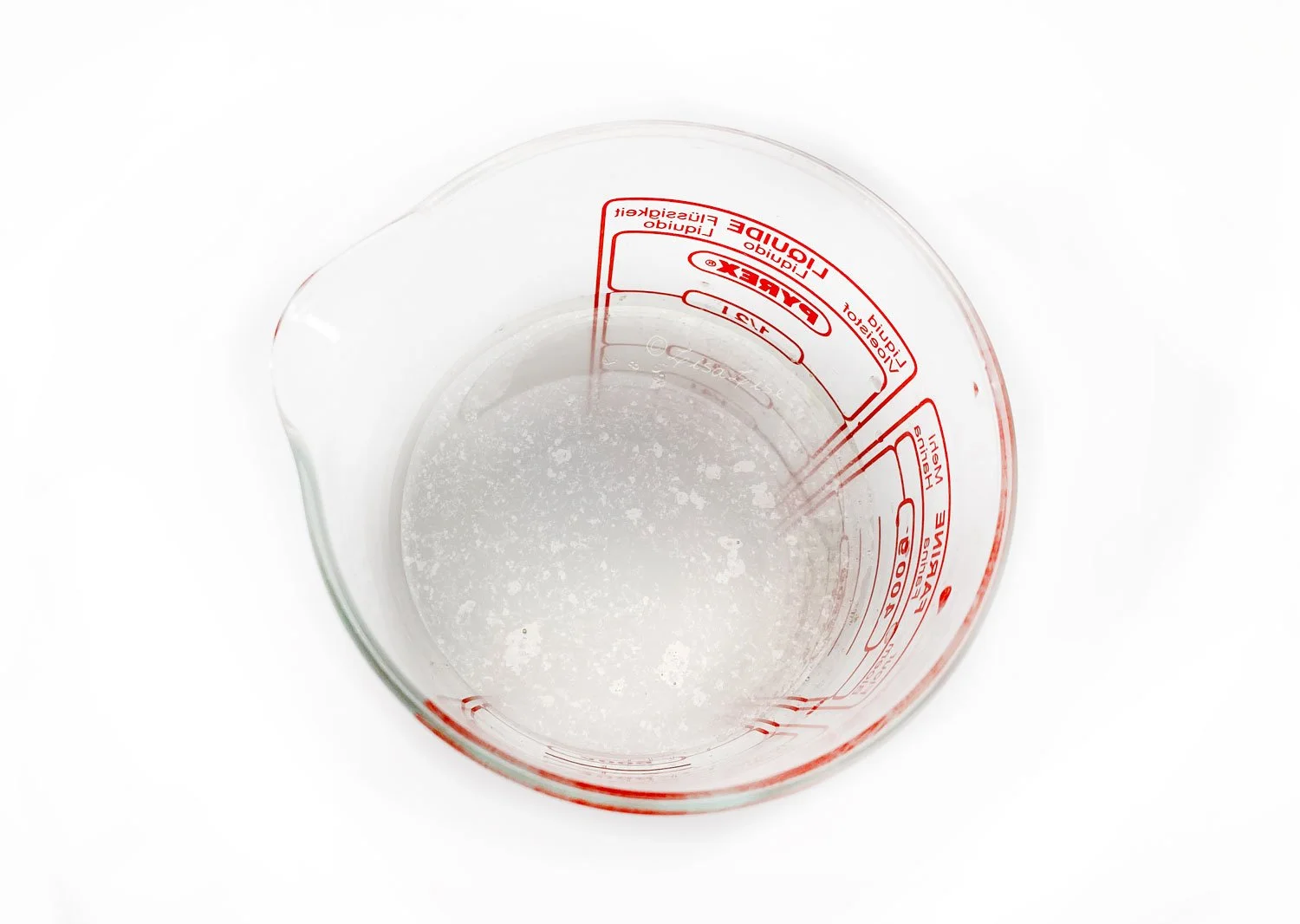Working with an Air Still to Make Hydrosols
Lise
A lot of you have asked me how I use my Air Still to make hydrosols. Today, I’m going to show you the tools I use, the modifications I have made to them, and then walk you through the process of making this lemon distillate.
The Still itself is described (and pictured) in detail in this post.
Extra Tools
Pictured below is my collection of additional tools used in combination with the still.
The rings on the upper left are stainless steel baking rings bought from a professional chef’s suppliers. I stack these rings to create a raised ‘platform’ for the modified vegetable steamer pictured on the top right. The copper wire ‘birds nest’ is placed on top of the herbs before placing the lid on.
These are the only ‘extras’ I use.
Steamer Modifications
The vegetable steamer is a typical, widely available stainless steel little number that was purchased in a kitchen supplier shop. It did need a couple of modifications, which became necessary after making my first batch of distillate and discovering parts of the steamer had become discolored and were impossible to clean.
My modifications have been to remove all non-stainless steel parts and replace relevant bits with stainless steel. (I better come clean about who did the actual modifications: it was my tool wielding husband). I was close at hand to document the process.
The original handle that was in the center (the stick with the ring) was replaced with a (sanitisable) stainless steel screw. This was ‘merely’ a question of hunting around in a hardware store for the right type and size of screw.
There were also 3 ‘legs’ on the steamer that looked positively gunky after their first exposure to heat and steam.
These were removed by being drilled out.
Why is this important?
Because unidentified metal of any type can leach impurities into the hydrosol (and for that matter into steamed vegetables).
Below are the 3 legs after being drilled out of the body.
Having a steamer without legs is a non-issue for my needs, so this steamer has 3 extra holes in the bottom plate.
Now, let’s make this batch!
Here is a peek into the body of the Air Still. The rings are stacked to create a raised space on which the steamer is placed.
Note the water level is below the top ring. This is quite on purpose. The idea is for the steam to go through the raw material. If the water level is too high, the raw material risks getting ‘cooked’.
Obviously, the yield is going to be less than if you could just fill the body to the brim, but I have had quality results with this method and find doing more frequent and smaller batches is suitable for my needs.
As soon as the steamer is placed in the body, the ‘layering’ of the raw material begins. I like using approximately the top third of the still for the plants.
This distillate includes zest, leaves and meat of lemons that is layered until there is still a bit of room at the top for the final positioning of the copper wire birds nest.
The ‘birds nest’ is simply stripped speaker wire that is ‘hand shaped’ into a disc that is placed at the top. The addition of copper has made a tangible difference in my hydrosols. While the first distillate was completely free of copper and turned out quite nicely, there was an undertone of ‘metal’ that I found less than ideal.
After adding this element of copper, I find the fragrance has been ‘rounder’, ‘fuller’ and ‘richer’ with no metal undertones at all.
With the copper in place, the lid is locked onto the base, then the unit is plugged in and allowed to do its work until the batch is ready.
Below is the yield of this batch: a total of half a liter (500 ml).
There is an ever so slight amount of essential oil visible at the top of the container - not enough to separate from the hydrosol, but definitely there.
The fragrance and feel of this distillate was a real treat to use. I am a huge fan of citrus fragrances, and this functioned as a morning skin mist as long as it lasted.
The lemons I used for this batch: organic lemons from the Amalfi Coast of Italy - purchased in my local supermarket.
Do Tell
Do you make your own hydrosols? Which kind of still do you use?
PS: handcrafted distillates can be used as the water phase of emulsions for a beautifully fragrant and skin-pampering cream or lotion.










